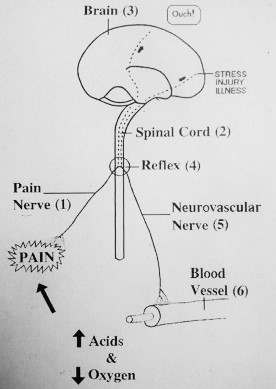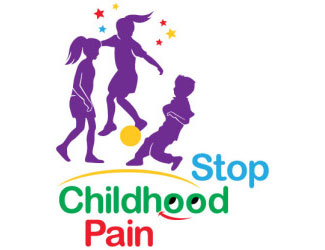What is Amplified Pain?
Amplified pain is pain that is out of proportion to the inciting stimulus. An example is when one has severe pain to just being lightly touched (allodynia) or to walking on a painful foot when there is no overt damage to the foot. The term amplified is used since a small sensory signal is amplified to the point it is unbearable. An analogy is when a microphone is placed too close to the speaker – you get very loud screeching feedback. The signal going into the microphone is soft but it comes out the speaker and goes back into the microphone and back out the speaker and thus sets up a vicious cycle resulting in a very loud sound. Even though the original hum coming from the speaker was soft, it becomes painfully loud.
In amplified pain, a very slight sensation can become unbearable pain as the nervous system sets up a feedback loop similar to the microphone example. The stimulus goes from the nerve to the spinal cord and then short-circuits to the autonomic nerves that control the blood vessels. This leads to lack of blood flow (ischemia) so the tissues do not get enough oxygen and there is a build-up of acids that lead to pain. This new pain signal is then again short-circuited to the autonomic nerves which again decrease the blood flow. This vicious cycle is how the pain is amplified (see image below). The pain is very real and this strong amplification is why medication typically does not work or only works temporarily.
The goal of the intense physical and occupational therapy used in pediatric Amplified Musculoskeletal Pain Syndrome (AMPS) programs at hospitals around the US, and shown in the video, is to retrain and desensitize the nervous system, breaking this pain cycle. This treatment method is successful in the vast majority of children and teens who have AMPS.

